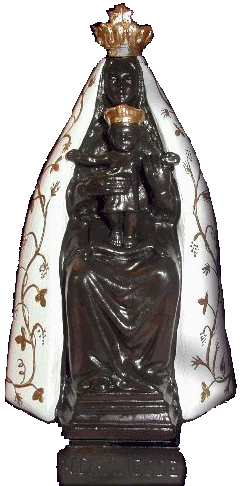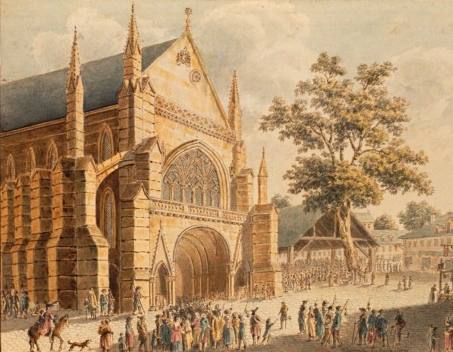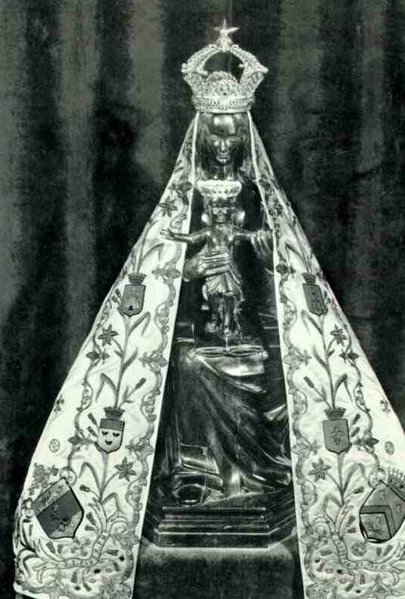Our Lady of Liesse
In 1134 three Knights of the Order of Saint John of Jerusalem, prisoners of the Muslims in Egypt, miraculously found or received in their prison a statue of Our Lady, which they named Our Lady of Joy, or Notre Dame de Liesse.
Painting of the Basilica of Notre Dame de Liesse where the Image of Our Lady of Liesse is enthroned.
In response to their prayers, a young Muslim princess named Ismerie took an interest in the Knights, and through the intercession of Our Lady and the mercy of God, the princess was converted. The princess arranged the escape of the pious crusaders and joined them on their journey to France. They carried the statue with them, and in the region of Laon, about 35 miles northwest of Reims, they founded a church as a resting place for the statue.
In June 1686, St. John Baptist de la Salle and twelve Brothers went to the shrine of Our Lady of Liesse to renew their vow of obedience. Painting by Giovanni Gagliardi, 1901
Through local devotion the church took on the name of the statue, and gave that name to the whole region, so that Notre Dame de Liesse came to refer to both the devotion and the place. The statue came to be venerated by many, and Notre Dame de Liesse became the Patroness of the Diocese of Soissons.
In 1620 the titular Bailiff of Armenia, Fra’ Jacques Chenu de Bellay, built a church to Our Lady of Liesse at Valletta in Malta. It is today the chaplaincy church of the Port of Valetta.
The original statue was destroyed during the French Revolution, but the medieval basilica at Liesse remained a center of devotion to the Mother of God, and a new statue was installed and crowned there in 1857. It is still the focus of pilgrimage, especially on Whit Monday.
Memorial in the Missal of the Sovereign Military Hospitaller Order
of Saint John of Jerusalem, of Rhodes and of Malta




No comments:
Post a Comment